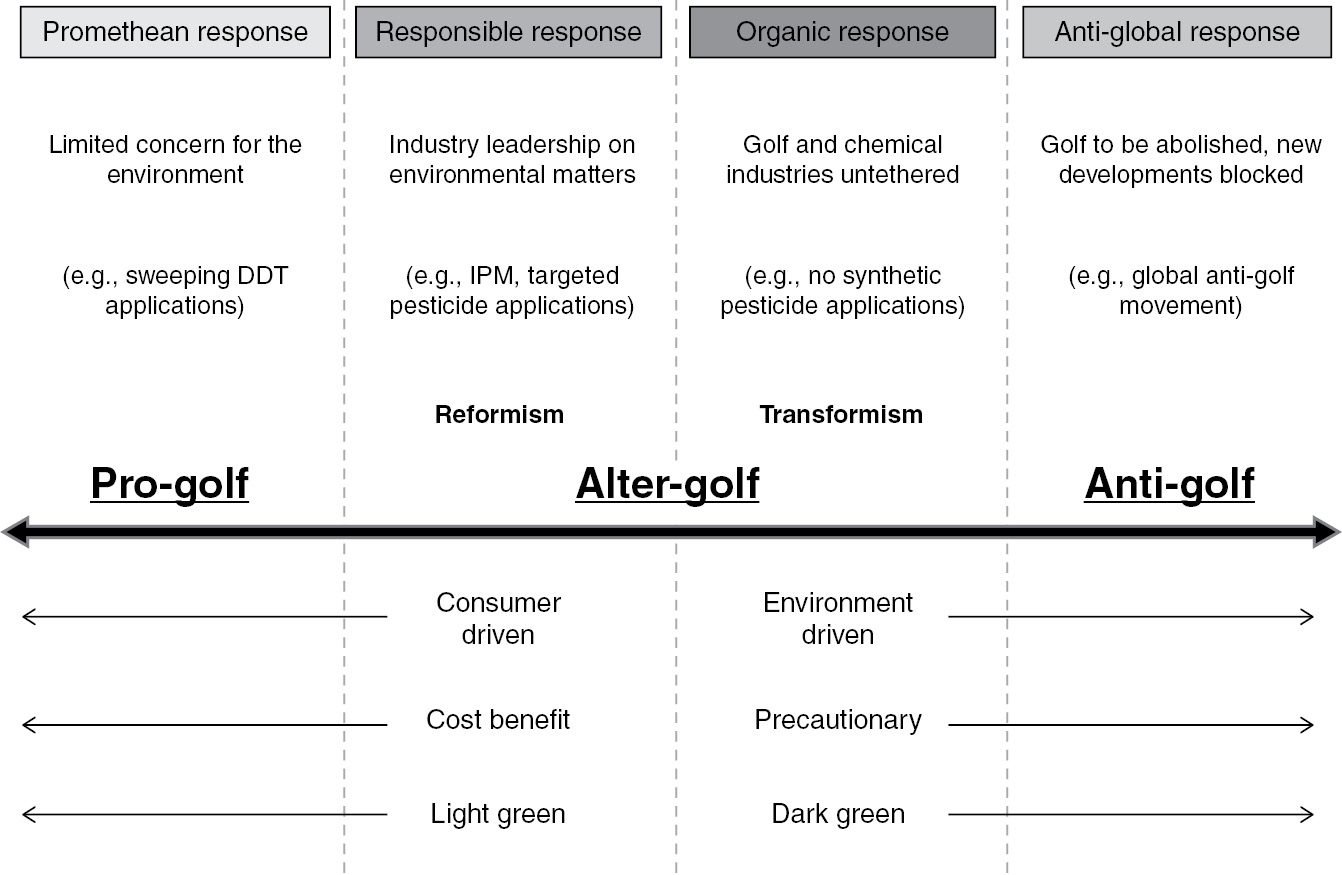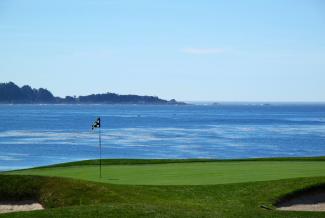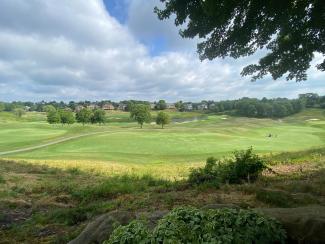Above -- the podcast interview with Brad Millington and Brian Wilson about their research on golf and environmental issues was conducted for the Sport, Social Justice & Development Podcast, hosted by Lyndsay Hayhurst, Julia Ferreira Gomes, Jessica Nachman, and Mitch McSweeney (this interview conducted by Julia, Jessica and Mitch).
In a 1964 edition of The Golf Course Reporter, a premiere journal for course superintendents in North America, journal editor Gene C. Nutter wrote a scathing review of Rachel Carson’s 1962 book Silent Spring. Carson, whose now-renowned book included criticisms of chemical companies for their environment-damaging behaviours, was admonished by Nutter for loading her arguments with emotional rather than scientific pleas, and for using “isolated examples” of pesticide-induced harms. Nutter went so far as to suggest that “…the threat of increased governmental controls [e.g., on chemicals] is a threat to greater freedom of action in our country and to the necessary use of essential agricultural tools” (Nutter, 1962:p. 50). For Nutter, this “‘threat to greater freedom of action”’ was also a threat to the freedom of golf industry members – members who, to a great extent, saw pesticides (i.e., chemicals) as necessary tools for superintendents committed to keeping golf courses playable and pristine.
For generations, greenskeepers went about their jobs more or less without regulation and a kind of environmental innocence, or ignorance, if you will. But that all began to change in 1962 when Rachel Carson’s book, ‘Silent Spring hit the shelves. The ground-breaking work, a treatise on the dangers of pesticide use, caused much of society to take notice.
(Ostmeyer, 2001, p. 41)
What Happened?
In a 2016 book entitled The Greening of Golf: Sport, Globalization and the Environment, Brad Millington and Brian Wilson (co-authors of this post, along with Jeanette Steinmann) sought to answer a set of questions that follow from this apparent contradiction between Nutter's anti-environmentalist proclamation in the mid 1960s to the more contemporary pro-environment stance that golf industry members advertise today. These include:
"What happened in and around the golf industry between the early 1960s and early 2000s that led to this change in tone and content? What role do the pesticides that Nutter so vehemently defended continue to play in golf course maintenance – and what did the change from ‘ignorant’ to (presumably) ‘responsible’ practices on the part of golf course superintendents look like? What did we know – and what do we now know – about the impacts of pesticides used on golf courses on humans, animals, and the natural environment? How are golf-related pesticides currently regulated, who enforces these regulations, and what ethical stance underpins these regulations (i.e., is a ‘precautionary’ approach driving regulation, or a ‘cost-benefit’ one)? How is the problem of excessive water usage, another major environmental concern associated with golf course maintenance, dealt with and viewed by industry, governments, and others? Why is it so important to have pristine conditions on golf courses? How have governments, activists, and various golf industry members responded to golf-related environmental concerns over time? How viable is ‘organic golf’ (i.e., chemical-free golf) as an alternative to synthetic chemical-dependent golf course management?" (Millington & Wilson, 2016, pp. 3-4).
This Blogpost/Museum
In this Blogpost we summarize some of the answers to these questions -- and point to supplementary writing and other resources along the way in hopes of provoking thinking about golf and environmental issues specifically, and ways that themes highlighted here are pertinent questions about sport's relationship with environmental issues more generally.
Key concepts: Light green, dark green & the PAAR Continuum
Explore some key concepts below! Chapter 2 outlines key debates within the field of environmental sociology and explores how these debates are relevant to dealing with environmental issues in golf in particular. As explored in the boxes below, the main debate that Millington & Wilson (2016) focus on involves the view, on one side, that environmental problems can be solved through business-friendly innovations and the development of new technologies, and the view, on the other side, that corporate-driven solutions are rarely stringent enough to foment substantial (and necessary) environmental changes.
PAAR Continuum
Millington & Wilson (2016) explore how globalization and neoliberalism relate to sport-related environmental issues, drawing from a typology developed by Harvey et al. (2009) that depicts a range of sport-related responses to aspects of globalization and to related forms of neoliberal governance.
Inspired by Harvey et al. (2009), Millington & Wilson (2016) go on to develop a continuum that outlines the range of responses to golf-related environmental issues, the PAAR Continuum.
On the far left, the pro-golf response reflects a position where golf course construction and maintenance takes place without inherent concern for environmental issues. This is a human-centric, or Promethean response, the 'lightest-green' response in the continuum.
The middle of the continuum contains 'alter-golf' responses. Reformist responses to golf-related environmental issues come from many in the golf industry and many governments. This 'light-green' response "includes attempts at making existing course maintenance and construction practices greener without fundamentally interrupting key economic drivers in the process" (Millington & Wilson, 2016, p. 47).
Other 'alter-golf' responses include transformational responses, such as organic golf. This 'dark-green' response, which the authors discuss further and advocate for, recognizes that golf courses should only be constructed under certain circumstances.
The right side of the continuum includes responses that reject golf altogether.

The pro-alter-anti-response (PAAR) continuum
In the remainder of the book, the authors delve into the range of responses that make up the PAAR continuum further. Click to read the book here, and visit the related articles by Millington & Wilson below!
Related Articles
Academic Articles
Public Sociology
Digital Museum Credits
Contributors: Dr. Brian Wilson, University of British Columbia; Dr. Brad Millington, Brock University; Jeanette Steinmann, University of British Columbia
Corresponding author: Dr. Brian Wilson, University of British Columbia, brian.wilson@ubc.ca











